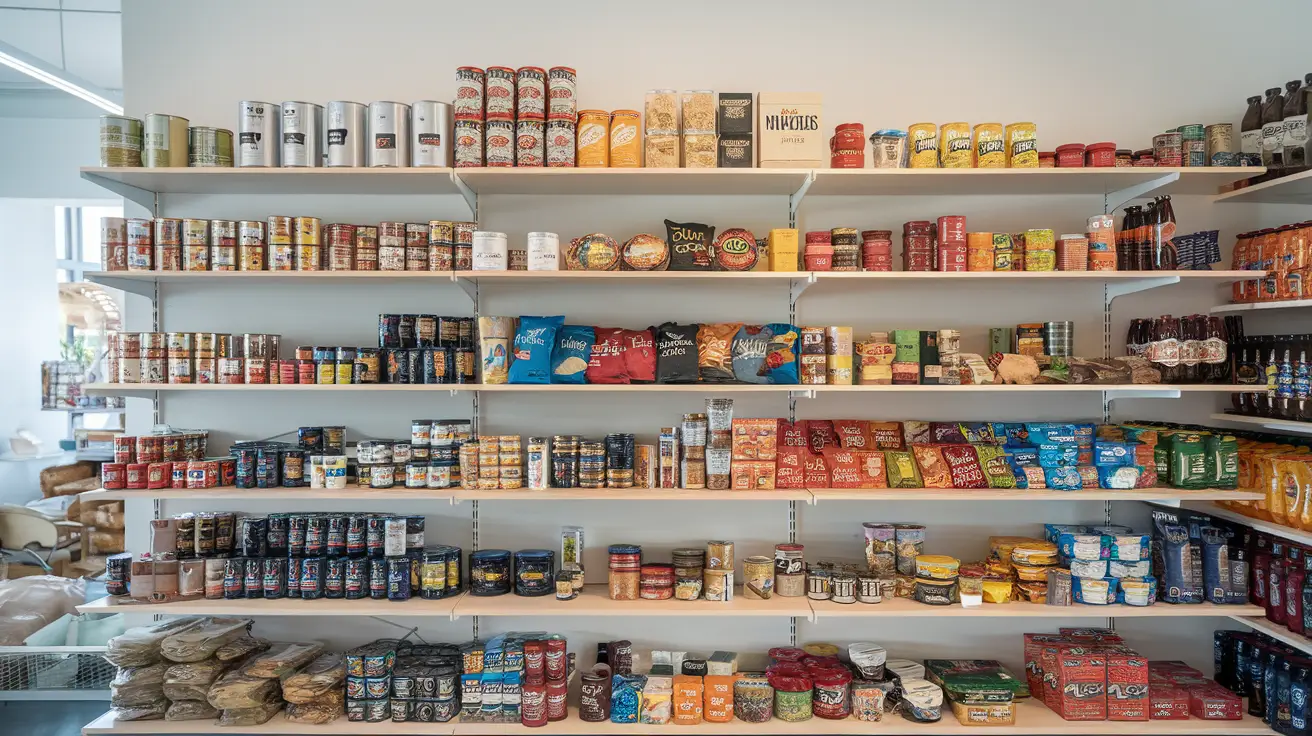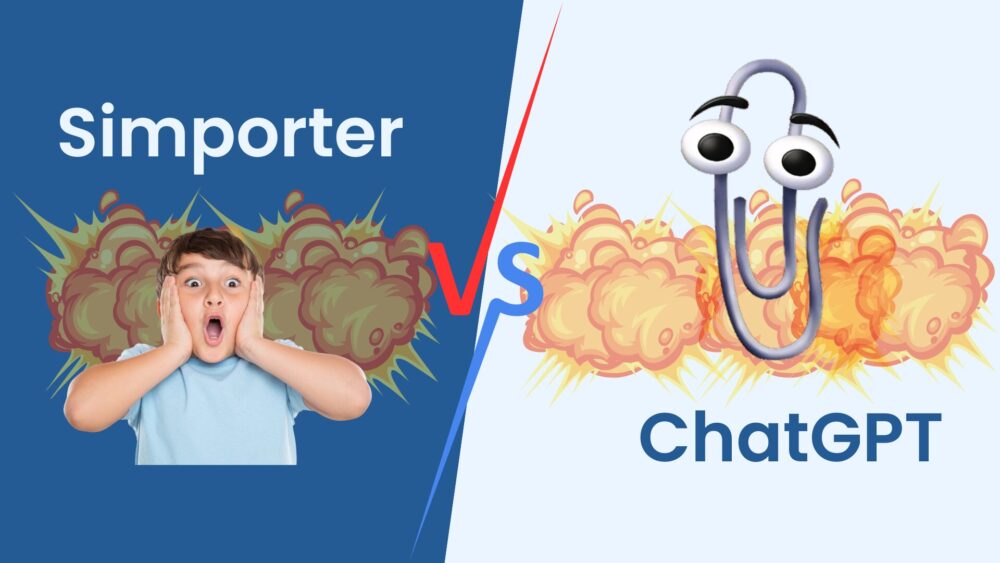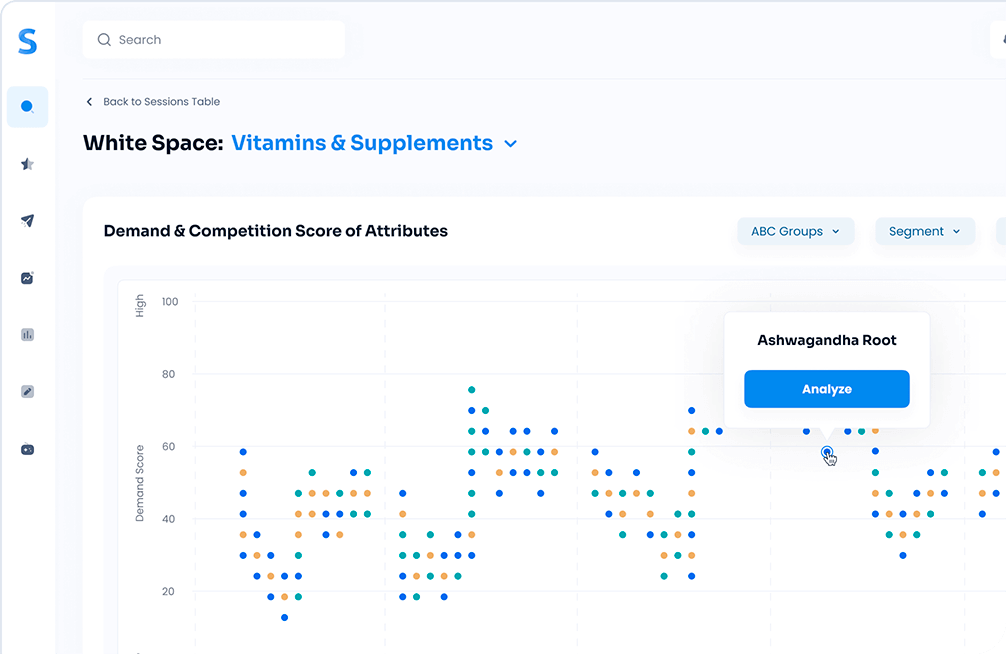Getting your product noticed in a busy retail environment is one of the toughest challenges brands face. Shelf tests are a powerful way to make sure your packaging design and product placement stand out from the competition. Whether you’re selling in physical stores or on e-commerce platforms, understanding how consumers interact with your product is key to driving sales. With Simporter, you can automate this process and get data-driven results in no time.
- What Is Shelf Testing?
- Why Shelf Testing Matters
- How Shelf Testing Works with Simporter
- Key Benefits of Using Simporter for Shelf Testing
- Common Applications of Shelf Testing
- Metrics That Matter in Shelf Testing
- Common Pitfalls in Shelf Testing (and How to Avoid Them)
- How to Implement Your Shelf Testing Results
- Why Choose Simporter for Shelf Testing?
- Conclusion
What Is Shelf Testing?
Shelf testing is a method used to evaluate how products perform when displayed on store shelves. This can be done in physical stores, through virtual simulations, or using A/B testing. The goal is to measure how consumers engage with products based on factors like packaging, placement, and price.
With over 70% of purchasing decisions made at the point of sale, shelf placement and design play a crucial role in whether your product gets picked up or left behind. By using shelf tests, you can figure out what works best for your product before launching it in the market. This way, you can avoid costly mistakes and improve your chances of success.
Types of Shelf Testing
There are different methods of shelf testing available today. Here’s a breakdown of the most common types:
- In-store Shelf Testing: Conducted in actual retail environments, this method involves setting up products in real stores and observing how consumers interact with them. It’s the most realistic but also the most expensive and time-consuming method.
- Virtual Shelf Testing: This method simulates a shopping experience through a computer or VR environment. Participants navigate a virtual store and interact with products as if they were physically there. Virtual testing is cost-effective and offers greater flexibility since you can test multiple layouts quickly.
- A/B Testing: A/B testing is where two versions of a product or packaging are shown to two separate groups of consumers. Each group is exposed to a different version, and their reactions are compared to determine which version performs better.
Simporter specializes in virtual and A/B testing, providing a fast, affordable, and effective way to test your product before it hits the market.
Why Shelf Testing Matters
Shelf testing is not just about checking if your product looks good next to competitors. It’s about understanding how consumers engage with your product and why they choose it over others. Many factors influence a purchase decision, including:
- Product Visibility: How well does your product stand out?
- Consumer Attention: Does your packaging grab attention quickly?
- Competitive Positioning: How does your product compare to competitors in the same category?
By testing these elements before launch, you can make data-backed changes that improve your product’s chances of success.
How Shelf Testing Works with Simporter
Simporter has streamlined the process of shelf testing by automating key steps. With AI-powered tools, you can quickly test different packaging designs, prices, and placements without the hassle of traditional methods. Here’s how Simporter’s shelf testing works:
- Select Competitive Products: Simporter’s AI will automatically pick competitive products to test against your own. It arranges the items in a virtual environment that replicates a real shelf or e-commerce page.
- Upload Your Product Images: All you need to do is upload images of your product and set the price. Simporter takes care of the rest by inserting your product into the virtual shelf setup.
- Create Alternate Designs: Don’t have an alternate version of your product packaging? Simporter’s AI visualizer can generate one for you, at no extra cost.
- Set Demographic Filters: The next step involves setting up filters for your consumer panel. You can choose respondents based on age, gender, purchase history, and more, ensuring you get feedback from your target audience.
- Conduct A/B Testing: Once your product is inserted into the virtual shelf, respondents from your target demographic will be shown two versions of the test: one with the original design (A) and one with an alternate design (B). Key metrics like purchase intent, attention span, and brand recall are measured for each version.
- Analyze the Data: Simporter gathers all the data and provides you with clear, actionable insights. You can see which version of your product performs better and why.
Key Benefits of Using Simporter for Shelf Testing
Simporter’s shelf testing tools offer a number of advantages over traditional methods. Here are some of the key benefits:
Speed
With traditional shelf testing, it could take weeks or even months to set up a test, recruit participants, and gather feedback. Simporter’s automated system can cut this time down to just days. This gives you the agility to test multiple packaging designs, prices, or layouts in a fraction of the time.
Cost-Effectiveness
Hiring a research firm to run in-store tests can be expensive. Physical shelf tests often require purchasing products, hiring in-store staff, and renting shelf space. Virtual shelf tests and A/B testing with Simporter are much more affordable. You get the same quality of insights without breaking the bank.
Realistic Simulations
Simporter’s virtual shelf environments look and feel like real stores. Whether you’re testing for physical shelves or e-commerce platforms, the simulations are highly accurate, giving you confidence that the results will translate to real-world performance.
Customizable Consumer Panels
Simporter lets you customize your consumer panels, ensuring you’re getting feedback from the people who matter most—your target customers. You can filter respondents based on various factors, including demographics and shopping behavior.
Actionable Insights
At the end of the testing process, you get clear data on how well your product performed. You’ll know if your packaging design stands out, if your price point is competitive, and what consumers think about your product compared to others on the shelf.
Common Applications of Shelf Testing
Shelf testing can be used for more than just packaging design. It can also be applied in areas like product pricing, placement, and even new product launches. Here are a few common applications:
- Packaging Design: Test different designs to see which one resonates best with consumers.
- Pricing Strategy: Compare different price points to see how they affect purchase intent.
- Product Placement: Experiment with different shelf placements and positions to see which one boosts visibility and sales.
- New Product Launches: Before launching a new product, test its placement and packaging to ensure it will stand out against competitors.
Metrics That Matter in Shelf Testing
To get the most out of shelf testing, it’s crucial to focus on the right metrics. These measurements will tell you how your product is performing in comparison to competitors and where improvements are needed. Let’s explore the key metrics you should track during your shelf test:
Visual Attention (Time to First Fixation)
This metric measures how quickly a consumer notices your product on the shelf. Time to First Fixation (TTFF) is crucial for determining if your product is eye-catching enough in a crowded retail space. If your product isn’t grabbing attention within a few seconds, it’s likely being overlooked. Simporter’s shelf testing tools track TTFF using advanced eye-tracking techniques, helping you understand whether changes in packaging or placement are needed.
Purchase Intent
This metric evaluates how likely a consumer is to buy your product after interacting with it. Measuring purchase intent allows you to see how your product stacks up against competitors on the shelf. If your product has low purchase intent, it could be due to pricing, packaging, or placement issues. With Simporter, you can test these factors in a virtual environment and adjust accordingly.
Attention Span per Product
How long does a consumer spend interacting with your product? If a shopper spends more time viewing your product, it usually indicates a higher level of interest. However, long attention spans could also signal confusion if the design or messaging is unclear. Simporter’s metrics give you the detailed breakdown of how much time consumers spend engaging with your product and what might be turning them off.
Competitive Comparison
It’s important to not only track how your product performs in isolation but also how it performs against competitors. Competitive comparison involves assessing how your product stands out in a lineup of similar items. This can help you determine if your design is too similar to others or if it needs more distinction to capture attention.
Conversion Rate (Time to Cart)
The time it takes for a shopper to add your product to their cart is a crucial indicator of purchasing behavior. A short time to cart means your product quickly convinced the consumer to buy, while a longer time could indicate hesitation. With Simporter, you can track this metric across different versions of your product, allowing you to refine packaging or pricing for quicker conversions.
Common Pitfalls in Shelf Testing (and How to Avoid Them)
While shelf testing offers tremendous benefits, there are a few common mistakes brands make that can limit the effectiveness of the process. By being aware of these pitfalls, you can ensure that your tests yield the best results possible.
Testing in the Wrong Environment
One of the biggest mistakes is not simulating the actual retail environment where your product will be sold. If your product is designed for big-box stores like Walmart or Target, it should be tested in an environment that mimics those stores. If it’s an e-commerce product, make sure the shelf test replicates the look and feel of an online marketplace like Amazon. Simporter’s virtual environments are customizable to reflect different types of retail spaces, giving you accurate results tailored to your product’s final destination.
Ignoring Consumer Feedback
Shelf testing is only useful if you act on the feedback you receive. If consumers consistently indicate that a design is confusing or a product is priced too high, those are issues you should address before launching. By using Simporter’s detailed insights, you can make data-driven decisions to improve your product before it hits the market.
Overloading the Shelf
In real retail environments, consumers are often faced with an overwhelming number of products. Testing your product in an overcrowded shelf setup can produce misleading results, as the abundance of competition may make it harder for any single product to stand out. Simporter allows you to adjust the shelf layout to a more realistic size, making it easier to see how your product would perform in a true-to-life scenario.
How to Implement Your Shelf Testing Results
Once your shelf test is complete, the next step is to act on the insights you’ve gathered. Here’s how you can use the data from Simporter’s shelf tests to improve your product strategy:
Refining Packaging Design
If your test results show that your packaging didn’t grab attention or caused confusion, it’s time to make changes. Focus on simplifying the design, using bolder colors, or highlighting key product benefits more clearly. Use the A/B testing results to determine which version of your packaging resonated best with consumers, and implement those changes before launching.
Optimizing Product Placement
Your product’s position on the shelf is just as important as the design itself. If your shelf test indicates that consumers noticed your product more when it was at eye level or next to a particular category, use this data to inform your product’s placement strategy in-store. If you’re working with online marketplaces, pay attention to how placement on different pages or sections impacts attention and purchase intent.
Adjusting Price Points
Sometimes, low purchase intent isn’t about the design but about the price. Shelf testing can help you identify the ideal price point for your product by testing different price levels and seeing how they affect consumer behavior. If consumers are hesitant to buy at a higher price, consider adjusting to a more competitive rate.
Pre-Launch Adjustments
For new product launches, shelf testing is an invaluable tool for perfecting your product before it hits stores. The insights gained from these tests help you adjust the packaging, placement, and pricing to ensure the best possible reception. This can save you from costly redesigns or rebranding efforts after launch.
Why Choose Simporter for Shelf Testing?
While many companies offer shelf testing services, Simporter stands out due to its unique combination of AI-powered tools, speed, and affordability. Here’s why you should consider Simporter for your next product test:
Fast Turnaround
Traditional shelf tests can take weeks to set up, but Simporter’s automated tools cut that time down significantly. You can run multiple tests in just days, giving you the agility to make quick, informed decisions.
Affordable Pricing
Compared to traditional shelf testing methods, which can cost north of 50 thousand dollars, Simporter offers a cost-effective solution without compromising on the quality of insights. You get detailed data at a fraction of the cost, allowing you to test more designs and gather more feedback within your budget.
Accurate, Realistic Simulations
Simporter’s virtual shelf environments are designed to be as close to real life as possible. Whether you’re testing for physical stores or e-commerce platforms, the simulations are highly accurate, giving you results you can trust.
Customizable Consumer Panels
You get to pick your audience. With Simporter, you can filter participants based on demographics like age, gender, income, and shopping history. This ensures that the feedback you receive is relevant to your target market.
Actionable Insights
At the end of each test, Simporter provides a clear, data-driven report that tells you exactly what worked and what didn’t. You’ll have actionable recommendations that you can use to improve your product and increase your chances of success in the market.
Conclusion
Shelf testing is an essential part of product development and launch strategies. Whether you’re refining packaging, testing price points, or figuring out optimal placement, the insights from shelf testing can help you make informed decisions. Simporter makes the entire process faster, easier, and more affordable by automating key steps and offering detailed, actionable insights.
By using Simporter’s tools, you can avoid costly mistakes, improve your product’s visibility, and boost your sales. So, if you’re looking to perfect your product before launch, give Simporter’s shelf testing a try—it’s the smart way to get ahead in today’s competitive market.
To learn more or see a demo in action of Simporter’s shelf-testing capabilities, sign up for a demo today.









